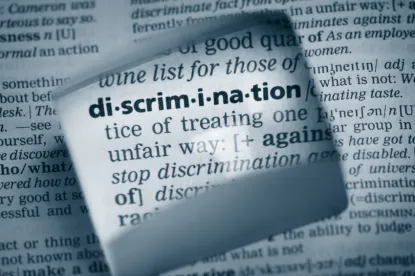Employers are generally familiar with the complex web of federal and state statutes that prohibit workplace discrimination on grounds including sex, race, color, national origin, religion, genetic information, age, and disability and they are, by and large, vigilant to prohibit explicit forms of discrimination on these protected bases.
But rare is the case where direct evidence of explicit bias is alleged. Cases alleging disparate treatment are more often than note based on circumstantial evidence. Another class of cases – those alleging disparate impact – are even further attenuated. In such cases, facially neutral policies or practices are examined to determine if, as applied, they disproportionately affect protected classes – what the Supreme Court has explained as “practices that are fair in form, but discriminatory in operation.” Griggs v. Duke Power Co., 401 U.S. 424 (1971).
How can otherwise neutral policies result in discriminatory results? The answer is often “unconscious prejudices and disguised animus,” as Justice Kennedy explained in Tex. Dep’t of Housing & Cmty. Affairs v. Inclusive Communities Project, 576 U.S. __, 135 S. Ct. 2507, 192 L. Ed. 2d 514 (2015), implicit biases held by all persons that may manifest as discrimination. According to the Kirwan Institute for the Study of Race and Ethnicity, implicit bias refers to “the attitudes or stereotypes that affect our understanding, actions, and decisions in an unconscious manner.” Implicit biases involve both favorable and unfavorable perceptions and are triggered involuntarily, without an individual’s awareness or deliberate control. Unconscious biases are not revealed through introspection, and the individual that possesses them may not even be aware of them. These biases are located deep in an individual’s subconscious, and are different from known biases that individuals may choose to hide for the purposes of social or political correctness. People form their implicit biases over time, through life experience and exposure to various sources.
As the name suggests, implicit bias operates at the subconscious level, making it difficult (but not impossible) to counterbalance. But counteracting bias is critical to ensure fairness in recruiting, hiring, promotion, evaluation, establishing workplace culture, and termination. Employers are encouraged to train their employees, particularly those in leadership positions and hiring manager positions, on implicit bias to build awareness about what it is and how it impacts a person’s thought process. Harvard’s Project Implicit is a helpful resource for explaining and understanding implicit bias, and the Implicit Association Tests (IAT) (available free online) is helpful at uncovering the test-taker’s hidden biases involving race, gender, disability, age, and other characteristics, through word-picture association. Revealing our covert assumptions along protected bases is a starting point in establishing mindfulness and intentionality in employment decision-making.
Human Resources professionals must be vigilant to ensure that implicit bias does not poison the work environment, starting with reviewing job postings. Studies have shown that words such as “competitive,” “confident,” “outspoken,” and “strong” are more likely to attract male applicants, while words like “supportive,” “collaborative,” “committed,” or “cooperative,” may attract more female applicants. More neutral job descriptions, blind review of applications and resumes (focusing on credentials and not physical characteristics), and standardized interview questions to improve consistency in the consideration process may help to attract and recruiter a broader range of diverse candidates.
HR is also invaluable in reviewing job evaluations and participating in discussions around promotion and pay increases to identify where subtle assumptions about race, age, gender, disability or other protected statuses may creep into the discussion. The same loaded terminology in recruiting advertisements, yielding a less diverse applicant pool, may be yield subtly discriminatory results in the performance evaluation process. With many employers looking toward the goal planning and performance review season, a refresher on the potential impact of unconscious biases and targeted steps to guard against implicit bias is recommended.




 />i
/>i

